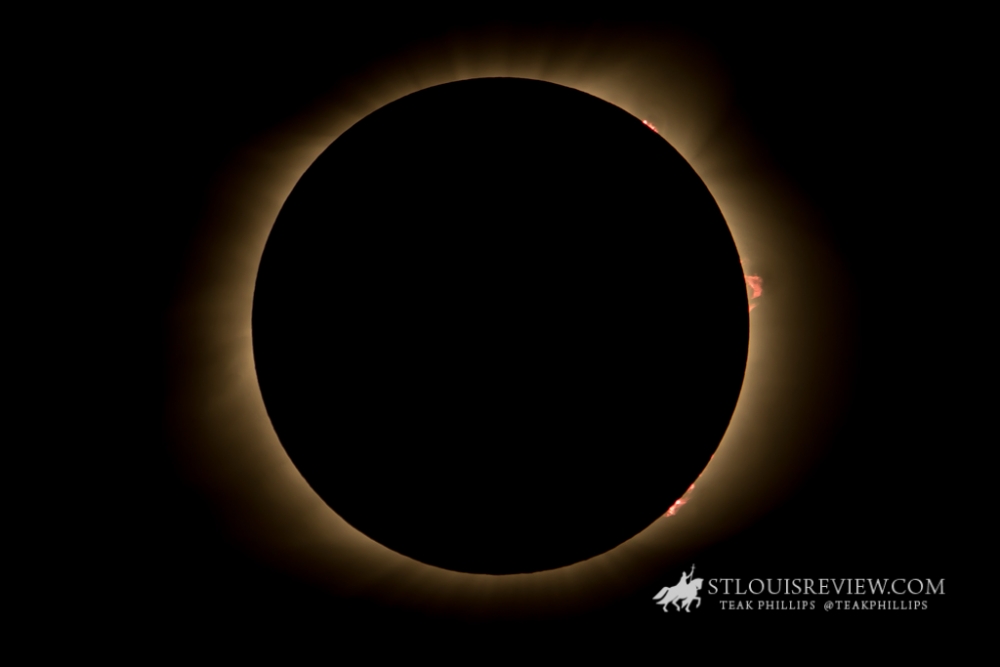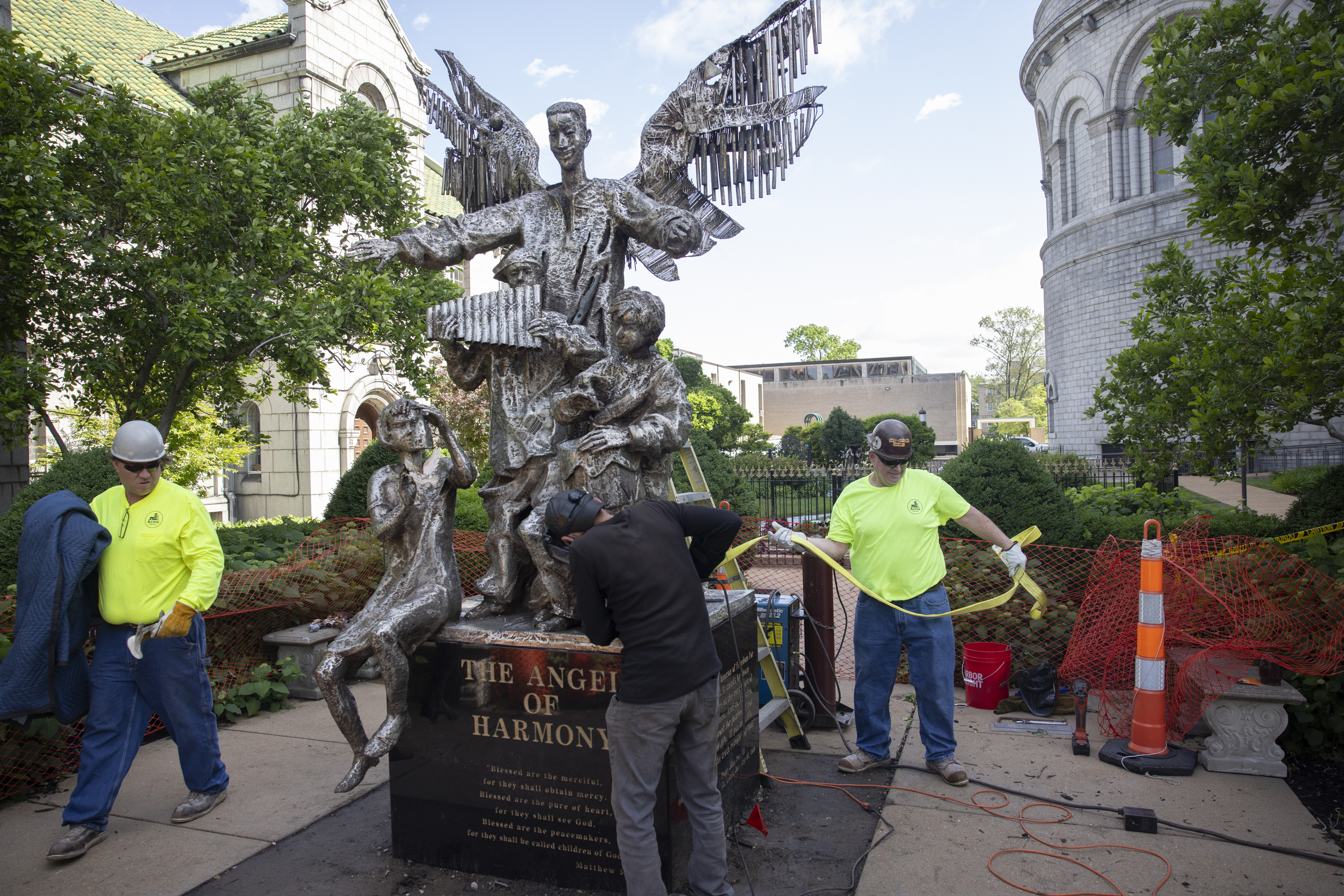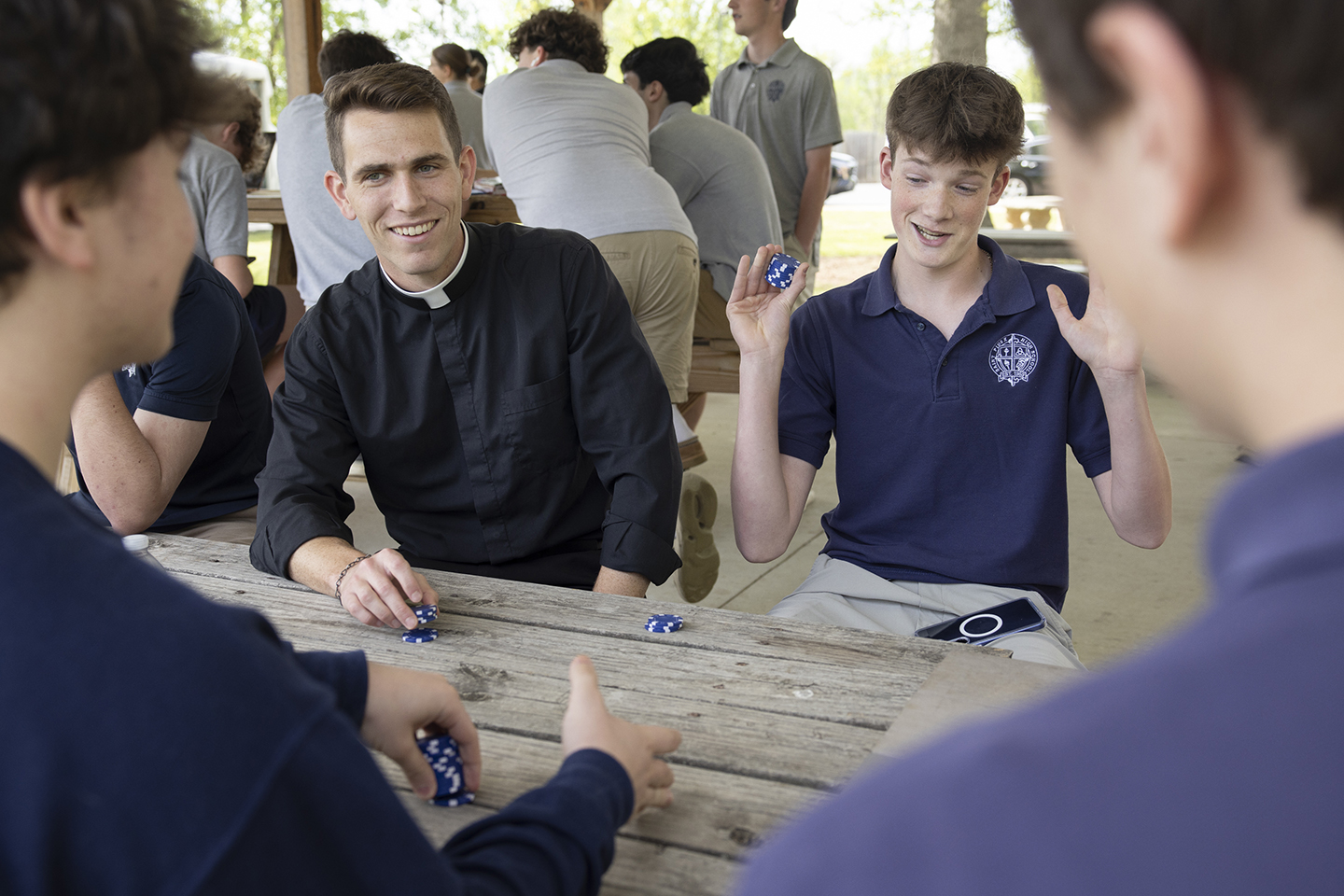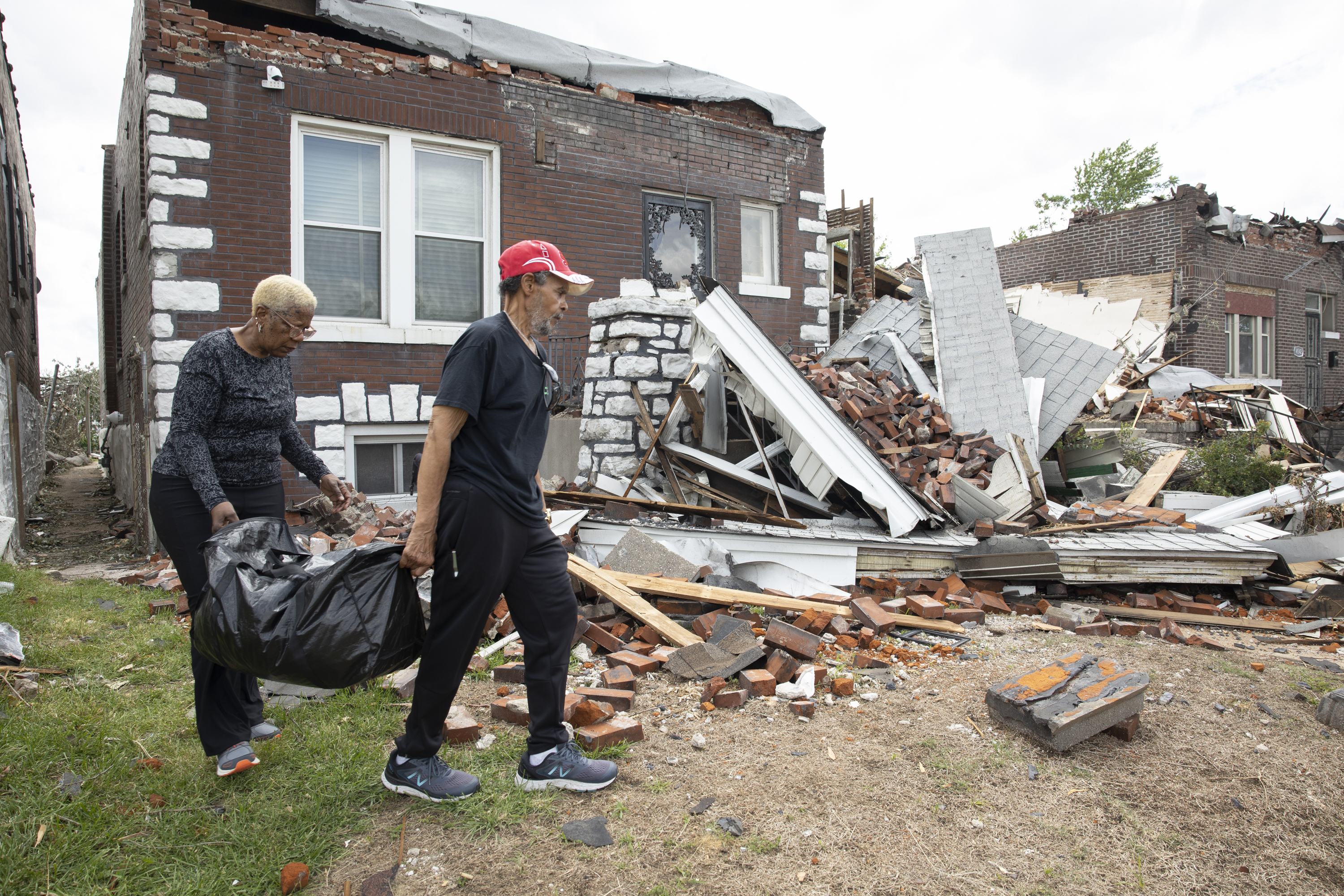Eclipse gives Viz students insight into women and the sciences

Former NASA scientist uses rare event to emphasize opportunities available now
At the initial moment of totality Aug. 21, excitement quickly spread among Visitation Academy students gathered on Ritter Field as they observed the rare solar eclipse.
They whooped and hollered then kept it up for the duration of the one-minute, seven-second celestial light show … well, the non-light show. Only the sun’s corona was visible as the moon blotted out the rest, a black ball inside a pulsating circle of light.
“That was so cool; I have goose bumps,” senior Stevie Bisch said moments after totality, as the sun took on a crescent shape, only partially obscured. “My life is changed, literally changed.”
Perhaps it was. A few hours prior, former NASA scientist Peter Hildebrand gave the students at the all-girls school examples of women doing cutting-edge work on the very eclipse they’d be watching that afternoon. Thus, as the students whooped it up on the Viz athletic field, Jenna Samra and Vanessa Martinez flew 600 mph at 45,000 feet in a Gulfstream jet outfitted to study the seldom-seen corona, which is usually overwhelmed by the sun’s brightness.
Samra, an applied physics doctoral candidate at Harvard, is a lead researcher on the project to study the corona’s colors, which are indicative of chemical reactions. Martinez, a mechanical engineer, helped design the hardware that connected Samra’s devices to the plane.
The timing wasn’t lost on the Viz students. “We’re actually seeing the eclipse and women are actually studying it the whole time we’re looking at it,” senior Mary Hilton said.

Hildebrand not only told the girls about the women’s impact, but he had photo evidence as well. His presentation featured a picture of Samra and Martinez standing next to the research plane.
“Visually it points out that we can do whatever we want,” senior Elizabeth Pittenger said, simply.
Hildebrand recently retired as director of the Earth Sciences Division at NASA/Goddard Space Flight Center in Greenbelt, Md. He also happens to be the brother of Dan Hildebrand, the head of the school at Visitation, which educates girls in grades one though 12. The moon and the sun aligned to bring his brother to St. Louis.
The presentation “happened so organically,” said Peter Hildebrand, whose wife, Nancy, is a St. Louis native and wanted to see the eclipse. Then — “almost the same day,” he said — he read a newspaper story about the experiment and the women’s vital roles.
“I said, ‘I have to tell this to the girls at Visitation,’” said Hildebrand, whose brother quickly welcomed the visit. “I wanted to use this to tell the girls that science and technology are great careers, great opportunities.”
The photo of Samra and Martinez provided tangible evidence that opportunities for women in the sciences are more than just an optimistic vision of the future. The future is now, at 45,000 feet on Eclipse Day 2017.
“To get an example of a woman scientist who’s doing all these cool things, it’s not like them just telling us; there’s actually a lot woman who are doing it,” senior Maria Rivero said.
Save
RELATED ARTICLE(S):
At the initial moment of totality Aug. 21, excitement quickly spread among Visitation Academy students gathered on Ritter Field as they observed the rare solar eclipse. They whooped and hollered … Eclipse gives Viz students insight into women and the sciences
Subscribe to Read All St. Louis Review Stories
All readers receive 5 stories to read free per month. After that, readers will need to be logged in.
If you are currently receive the St. Louis Review at your home or office, please send your name and address (and subscriber id if you know it) to subscriptions@stlouisreview.com to get your login information.
If you are not currently a subscriber to the St. Louis Review, please contact subscriptions@stlouisreview.com for information on how to subscribe.






